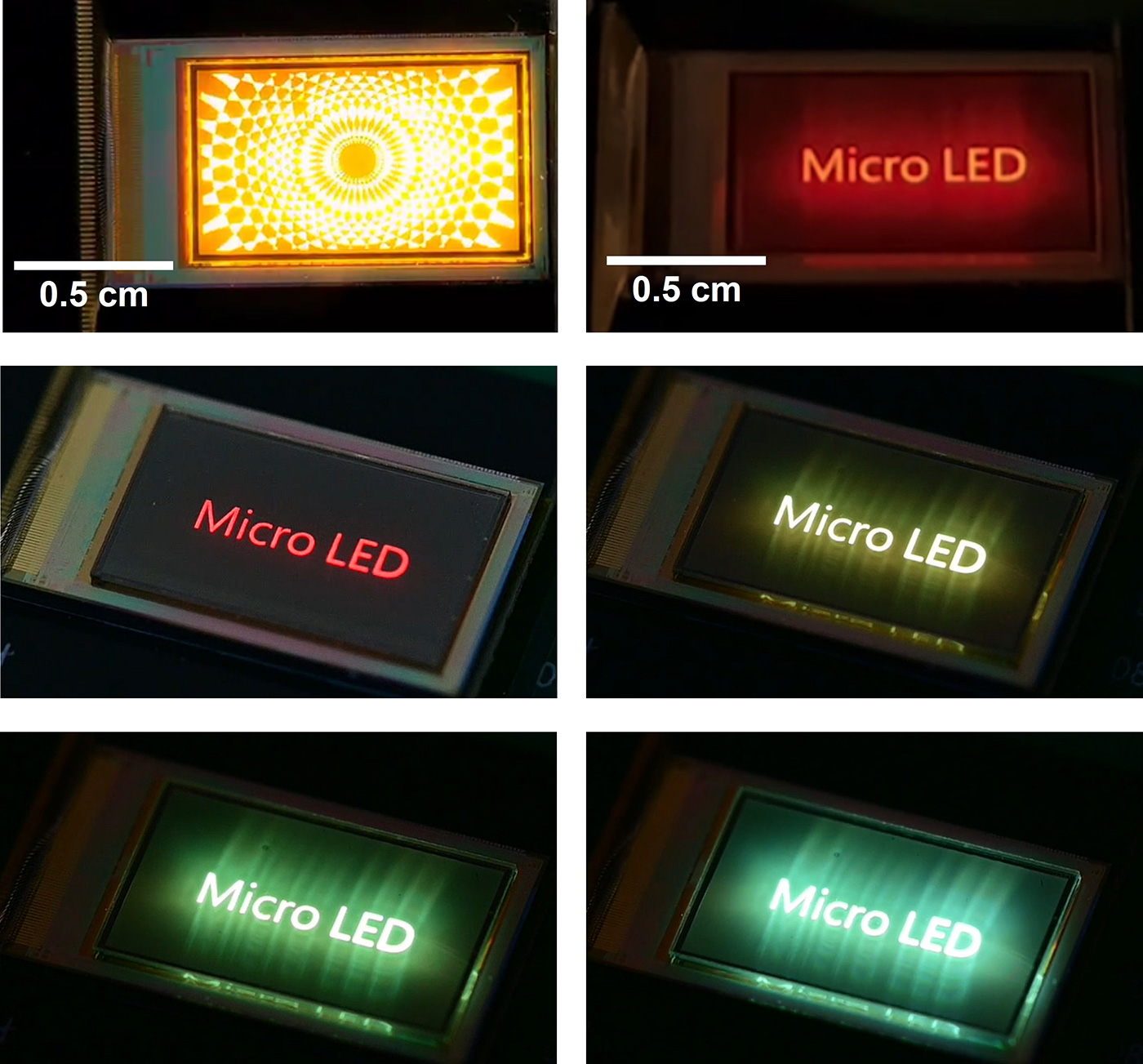[Image: Q-Pixel Inc.]
Q-Pixel Inc., a startup based in Los Angeles, CA, USA, says it has developed what it calls “the highest-resolution active-matrix color display in the world.” The display, fashioned from inorganic microLED pixels, comes in at a resolution of 6800 px per inch—“far surpassing,” according to the company, “current state-of-the-art displays, such as the Apple Vision Pro,” which sports roughly half that resolution. Q-Pixel says it’s now working toward commercializing the high-res displays.
Simplifying color-tunable pixels
Q-Pixel was founded in 2022 to advance technology and manufacturing of its proprietary polychromatic microLEDs and microLED displays. The startup maintains that its technology allows for full color tunability across “a single 4-micron pixel,” thereby replacing the conventional tuning by combining single-color LEDs. Q-Pixel believes this technology can overcome significant bottlenecks in manufacturing for microdisplays in particular.
The company, which has operated in stealth mode, joined the Silicon Catalyst semiconductor incubator in November 2023, and has claimed a number of world records since its founding. In late 2023, for example, Q-Pixel unveiled what it called the “world’s smallest full-color pixel” (at a 1-µm size) and had fashioned a “first-ever” display with a resolution of 10,000 px per inch.
Active-matrix display record
The 6800-px-per-inch display just announced by Q-Pixel has lower resolution than the one debuted in late 2023. However, the company stresses that the new model is an active-matrix display, which could prove important in its marketability for specific devices. (Active-matrix displays, the most common variety in modern displays, tend to be sharper and have better contrast than passive-matrix displays; they also have potential advantages in cost and energy efficiency.)
Q-Pixel says its 6800-pixel-per-inch prototype is “the highest-resolution active-matrix color display in the world.”
Q-Pixel noted that, in contrast to advanced VR displays that rely on micro organic LEDs (microOLEDs), its displays are based on microLEDs made of inorganic III–V compound semiconductor materials. The company claims this offers advantages in speed, brightness, working life and energy efficiency relative to microOLEDs.
Toward simplified micro-display assembly?
Also important, says Q-Pixel, is its “disruptive” tunable polychromatic LED (TP-LED), which it describes as “a single pixel capable of emitting light across the full color spectrum, without any use of subpixels, quantum dots, color filters, polarizers or mechanical stacking.” These characteristics, the startup believes, will give the technology a leg up by significantly simplifying display assembly and cutting manufacturing costs, while enabling “world-record pixel densities.”
“By delivering the world’s highest-resolution … active-matrix color display, Q-Pixel has accomplished two major milestones,” the company said, in a press release announcing the development. “First, they have proved that it is possible to produce ultra-high-resolution, active displays based on the microLED technology. Secondly, Q-Pixel has shown that their TP-LED pixel technology surpasses more mature display technologies such as OLEDs to attain world-record-breaking pixel densities.”


